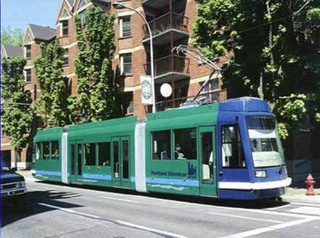City Council Committee Debates $140 Million Streetcar
By Corey Kahler
April 08, 2009
The proposed route would run down Broadway towards the International District. The streetcar is expected to operate twenty-four hours a day, except Sundays. During peak periods, a car would run every ten minutes, and during non-peak hours, every 20 minutes.
The plan is that once the light rail lines at South Jackson Street and through downtown are finished, the Capitol Hill streetcar line will connect with the rest of the street car network, as well as the Sound Transit light rail system providing service through most of North Seattle and to SeaTac airport.
However, until then, the streetcar would be a satellite system requiring its own maintenance facility, separate from the South Lake Union line, at a cost of about $14 million.
"The talk about building a duplicate facility reinforces my questioning of the wisdom of building a streetcar network," Rasmussen said.
Ethan Melone of the Seattle Department of Transportation briefed the council on the overall project budget and drew attention to the potential for additional expenses. Melone warned that the city will "be responsible for cost overruns during construction."
While no promises could be made, it is expected that construction of the streetcar rail would only take four weeks per block, Council Central Staff Chris Tobias said.
Short on details, Tobias reminded committee members that through research and discussions with the neighborhoods, "the streetcar was the best alternative" compared with other transportation options.
The two-mile long neighborhood-to-neighborhood light rail system was approved last November at an estimated cost of $140 million after the First Hill alternative was deemed infeasible back in 2005 due to geological and technical problems.
The ruling caused significant protest from First Hill residents who complained to City Council Transportation Committee Chair Jan Drago in a letter last August that the alteration "completely disregard[ed] the spirit of the Sound Transit's compromise commitment to the community."
Complementarily, Melone suggested, the city could have the opportunity to expand the current rail routes as far as Aloha and Broadway, and possibly other endpoints along the service routes, if savings are made during the initial period of construction.
Sound Transit is planning a meeting of its board in mid-June at which point further plans for the streetcar can be confirmed.
